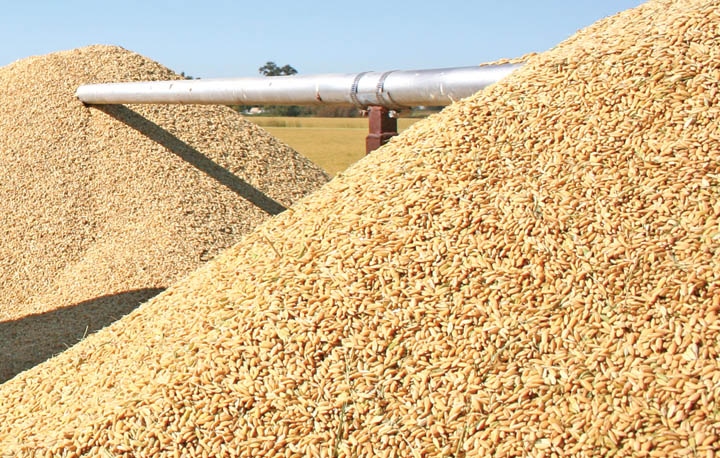January 17, 2011

The U.S. 2010/11 rice crop is estimated at 243.1 million cwt, up 1.5 million or 0.6 percent from the previous estimate due to increased yields, according to U.S. Department of Agriculture World Agricultural Supply and Demand Estimates (WASDE) report.
Average yield is estimated at 6,725 pounds per acre, up 56 pounds per acre from last month, but a decline of 360 pounds per acre from the previous year. Harvested area is estimated at 3.615 million acres, down 8,000 acres from the previous estimate. Long-grain rice production is estimated at a record 183.3 million cwt, up 1.8 million from last month, and combined medium- and short-grain production fractionally decreased to 59.8 million. All rice imports for 2010/11 decreased 1.5 million cwt to 18 million with the decline in long-grain. The pace of imports based on U.S. Census Bureau data through October is lagging, principally due to reductions from Thailand and India.
The National Agricultural Statistics Service's (NASS) Rice Stocks reported total rough rice stocks at 172.9 million cwt as of Dec. 1 and total milled stocks at 6.3 million (9.3 million cwt on a rough-equivalent basis). Total rice stocks on a rough-equivalent basis are 182.2 million, up 11 percent from a year earlier. Long-grain stocks as of Dec. 1 are estimated at 126.9 million (rough-equivalent basis) and combined medium- and short-grain stocks at 52.7 million.
Domestic and residual use for 2010/11 is unchanged at a record 129 million cwt. However, long-grain domestic and residual use increased 2 million cwt to a record 101 million, while domestic and residual use of combined medium- and short-grain decreased the same amount to 28 million. Some substitution of lower-priced long-grain rice for higher-priced medium-grain rice in domestic use is projected to continue.
All rice exports decreased 2 million cwt to 117 million, with long-grain decreased 4 million to 79 million, and combined medium- and short-grain increased 2 million to a record 38 million. The pace of exports and sales of long-grain rice is lagging based on Census data through October and U.S. Export Sales data through December.
Conversely, the pace of sales of combined medium- and short-grain rice is stronger than expected. The 2010/11 rough rice export projection decreased 1.5 million cwt to 43.5 million, while exports of combined milled and brown rice decreased 500,000 to 73.5 million (rough-equivalent basis). All rice ending stocks for 2010/11 are projected at 51.8 million cwt, up nearly 2 million from last month, up 15.1 million from 2009/10, and the largest stocks since 1986/87. Long-grain rice ending stocks are forecast at a record 41.9 million cwt, up 2.3 million from last month, and an increase of 18.8 million from the previous year. Combined medium- and short-grain rice ending stocks are projected at 8.4 million cwt, fractionally lower than last month, and a decrease of 3.7 million from 2009/10.
The 2010/11 long-grain season-average farm price range is projected at $10.50 to $11.50 per cwt, unchanged from last month, while the combined medium- and short-grain farm price range is projected at $17 to $18 per cwt, up 20 cents per cwt on each end of the range. The all rice season-average farm price is forecast at $12 to $13 per cwt, unchanged from last month. The price projections are based on NASS reported prices through mid-December and expected prices for the remainder of the marketing year.
Global 2010/11 rice production, consumption, trade and ending stocks decreased slightly from a month ago. The decrease in global rice production is due primarily to a smaller crop in Egypt, which is down 500,000 tons (minus-14 percent) to 3.1 million. Egypt's area harvested in 2010/11 decreased 19 percent from a month ago and is down 30 percent from the previous year. A reduction in the Egyptian government's support of producer prices has discouraged farmers from planting rice. Additionally, the Egyptian government has imposed water restrictions, thus reducing irrigation water availability. Furthermore, government restrictions have reduced exports.
Global imports increased slightly due primarily to increases for Indonesia and Turkey, but partially offset by a reduction for Egypt. Global exports increased slightly due mostly to an increase for Thailand, partially offset by a decrease for Egypt. World ending stocks are projected at 94.4 million tons, down 400,000 from last month and last year.
You May Also Like




